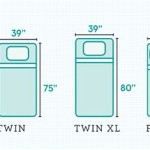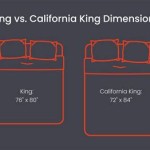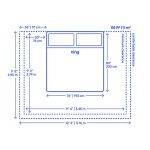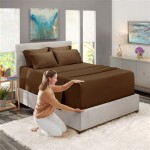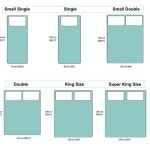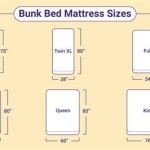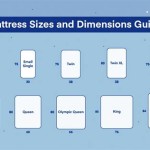Choosing the Right Carpet for Your Queen Size Bed: A Comprehensive Guide
Selecting the ideal carpet for a bedroom featuring a queen size bed requires careful consideration of several factors. The right carpet can significantly enhance the room's aesthetics, comfort, and functionality. This article provides a detailed overview of key aspects to evaluate when choosing carpet for a bedroom with a queen size bed.
Understanding Room Size and Carpet Coverage
The dimensions of a typical queen size bed are 60 inches wide and 80 inches long. The total floor area of the bedroom, however, will dictate the overall carpet coverage required. Consider the placement of the bed and other furniture in the room. If the aim is to carpet the entire room, measuring the total square footage is necessary. This involves multiplying the room’s length by its width. For instance, a 12-foot by 12-foot bedroom would require 144 square feet of carpet.
Alternatively, the design may call for an area rug placed strategically under or around the queen size bed. In this case, the rug size needs to be proportionate to the bed and the surrounding space. A common guideline is to allow the rug to extend at least 18-24 inches beyond the sides and foot of the bed. This provides a comfortable landing area when getting out of bed and visually anchors the bed within the room. Therefore, an 8x10 foot rug would be a minimum suitable size to achieve this goal. A larger 9x12 foot rug can offer even more coverage and visual impact, especially in larger rooms.
Accurate measurements are crucial for avoiding costly errors. Always double-check measurements before purchasing carpet or rugs. When ordering, it's wise to add a few extra inches to account for potential variations during installation or unexpected cuts. Consider the placement of other furniture such as nightstands, dressers, or seating areas. These factors will influence the size and shape of the carpet or rug you choose.
Carpet Fiber Types: Durability, Comfort, and Maintenance
The type of fiber used in a carpet significantly impacts its durability, comfort, appearance, and maintenance requirements. Several fiber options are available, each with distinct characteristics that make it suitable for different needs and budgets.
Nylon: Nylon is a synthetic fiber renowned for its exceptional durability and resilience. It resists crushing, staining, and wear, making it an excellent choice for high-traffic areas. Nylon carpets are also relatively easy to clean and maintain. They offer good color retention and are available in a wide range of styles and patterns. The primary disadvantage of nylon is its higher cost compared to some other synthetic fibers. However, its long-term durability often makes it a cost-effective option.
Polyester: Polyester is another synthetic fiber that offers good stain resistance and a soft feel underfoot. It is generally less expensive than nylon, making it an attractive option for budget-conscious consumers. However, polyester is less durable than nylon and may be more prone to crushing and matting over time. It is best suited for bedrooms or other areas with moderate traffic.
Olefin (Polypropylene): Olefin is a synthetic fiber known for its excellent stain resistance and its resistance to fading. It is also relatively inexpensive, making it a popular choice for Berber carpets and outdoor applications. However, olefin is less resilient than nylon or polyester and may be more prone to crushing and wear. It's also potentially flammable and can stain from oily substances.
Wool: Wool is a natural fiber prized for its luxurious feel, durability, and natural stain resistance. Wool carpets are also environmentally friendly and hypoallergenic. They offer excellent insulation and sound absorption, creating a warm and quiet environment. However, wool is typically more expensive than synthetic fibers and requires professional cleaning to maintain its appearance and prevent damage. It is also susceptible to moth damage if not properly treated.
Triexta: Triexta is a relatively new synthetic fiber that combines the stain resistance of polyester with the durability of nylon. It is made partially from renewable resources and offers a good balance of performance and value. Triexta carpets are also relatively easy to clean and maintain.
When selecting a carpet fiber, consider the level of traffic in the bedroom, the desired level of comfort, and the budget. Durable fibers like nylon or wool are best suited for high-traffic areas, while softer fibers like polyester or triexta may be more comfortable in bedrooms. Also, consider the ease of cleaning and maintenance when making the decision.
Carpet Pile Styles and Their Aesthetic Impact
The pile style of a carpet refers to the way the fibers are attached to the backing. Different pile styles offer varying levels of comfort, durability, and aesthetic appeal. Understanding the different pile styles is crucial for selecting the right carpet for a bedroom with a queen size bed.
Cut Pile: Cut pile carpets are characterized by fibers that are cut at the ends, creating a plush and soft surface. Several variations of cut pile carpets exist, each with its own unique appearance and performance characteristics.
Saxony: Saxony carpets feature a dense, plush pile with fibers that are closely packed together. This creates a luxurious and comfortable feel underfoot. However, Saxony carpets are more prone to showing footprints and vacuum marks, requiring regular maintenance to maintain their appearance.
Frieze: Frieze carpets have a highly twisted pile that gives them a textured and casual look. They are more durable than Saxony carpets and are less likely to show footprints or vacuum marks. Frieze carpets are a good choice for bedrooms with moderate traffic.
Plush: Plush carpets offer a more formal and elegant style. The fibers are evenly cut and densely packed, creating a smooth and velvety surface. Plush carpets are luxurious and comfortable but require diligent cleaning to maintain its appearance.
Loop Pile: Loop pile carpets are characterized by fibers that are looped back into the backing, creating a durable and textured surface. Loop pile carpets are typically more resistant to crushing and matting than cut pile carpets.
Berber: Berber carpets feature a looped pile that is often made from olefin or wool. They are known for their durability and stain resistance, making them a good choice for high-traffic areas. Berber carpets can have a level loop or multi-level loop construction.
Level Loop: Level loop carpets have loops that are all the same height, creating a uniform and consistent surface. They are durable and easy to clean, making them a good choice for bedrooms with moderate traffic.
Multi-Level Loop: Multi-level loop carpets have loops of varying heights, creating a textured and patterned surface. This adds visual interest and helps to conceal dirt and stains.
Cut-and-Loop Pile: Cut-and-loop pile carpets combine cut fibers with looped fibers, creating a textured and patterned surface. This style offers a good balance of comfort and durability. Patterns can be created with varied colors or textures.
When selecting a pile style, consider the desired level of comfort, the level of traffic in the bedroom, and the overall aesthetic of the room. Cut pile carpets offer a softer and more luxurious feel, while loop pile carpets are more durable and resistant to crushing.
Color and Pattern Considerations for a Cohesive Design
The color and pattern of the carpet significantly impact the overall aesthetic of the bedroom. Choosing the right color and pattern can enhance the room's style, create a sense of harmony, and complement the existing decor. Considerations include the size of the room, the amount of natural light, and the desired mood.
Color: Lighter colors tend to make a room feel larger and more airy, while darker colors can create a sense of warmth and intimacy. Neutral colors like beige, gray, and cream are versatile and can easily coordinate with a variety of decor styles. Bold colors can add personality and visual interest, but they should be used sparingly to avoid overwhelming the space. Consider the existing color palette of the bedroom, including the wall color, furniture, and bedding. The carpet color should complement these elements to create a cohesive and unified look.
Pattern: Patterned carpets can add visual interest and texture to a bedroom. Small-scale patterns are subtle and can work well in any size room. Large-scale patterns can make a statement but may be overwhelming in smaller spaces. Geometric patterns can add a modern and contemporary touch, while floral patterns can create a more traditional and romantic feel. Consider the overall style of the bedroom when choosing a carpet pattern. A more formal bedroom may benefit from a subtle and sophisticated pattern, while a more casual bedroom may be able to handle a bolder and more playful pattern.
Coordination: Coordinate the carpet color and pattern with the other elements in the bedroom, such as the bedding, window treatments, and wall decor. Use a color wheel to find complementary colors that work well together. Avoid choosing a carpet that clashes with the existing decor or overwhelms the space. Use a sample of the bedding and wall color when shopping for carpet to ensure a good match. Consider the amount of natural light in the bedroom. Darker colors will absorb more light, making the room feel smaller and darker. Lighter colors will reflect more light, making the room feel larger and brighter.
Ultimately, the best carpet color and pattern will depend on personal preferences and the overall design goals of the bedroom. Consider the various factors outlined above to make an informed decision that enhances the room's aesthetics and creates a comfortable and inviting space.
Underlayment: Enhancing Comfort and Extending Carpet Life
Underlayment, also known as carpet padding, is a layer of material installed beneath the carpet. While often overlooked, underlayment plays a vital role in enhancing the comfort, durability, and overall performance of the carpet. It provides cushioning, reduces noise, and helps to protect the carpet from wear and tear. Selecting the right underlayment is essential for maximizing the lifespan and enjoyment of the carpet in a bedroom with a queen size bed.
Types of Underlayment: Several types of underlayment are available, each with its own unique characteristics and benefits.
Foam: Foam underlayment is a popular and affordable option. It provides good cushioning and is available in various thicknesses and densities. Foam underlayment is typically made from polyurethane or rubber.
Fiber: Fiber underlayment is made from recycled materials, such as jute, felt, or synthetic fibers. It is environmentally friendly and provides good insulation and sound absorption.
Rubber: Rubber underlayment is a durable and resilient option that provides excellent cushioning and support. It is resistant to moisture and mold and is a good choice for high-traffic areas.
Factors to Consider when Choosing Underlayment: Several factors should be considered when selecting underlayment for a queen size bed bedroom.
Thickness: The thickness of the underlayment will affect the level of cushioning and support. Thicker underlayment provides more cushioning and is generally recommended for bedrooms.
Density: The density of the underlayment will affect its durability and ability to withstand traffic. Higher-density underlayment is more durable and is recommended for high-traffic areas.
Material: The material of the underlayment will affect its comfort, durability, and resistance to moisture and mold. Choose a material that is appropriate for the specific needs of the bedroom. Moisture resistant underlayments are better suited where dampness is a concern.
Carpet Manufacturer's Recommendations: Always follow the recommendations of the carpet manufacturer when selecting underlayment. Using the wrong type of underlayment can void the carpet warranty.
Investing in quality underlayment is a worthwhile investment that can significantly enhance the comfort and longevity of the carpet. Choose an underlayment that is appropriate for the specific needs of the bedroom and consult with a flooring professional for guidance.

Rug Under Bed Sizes King Queen Double Child Images

What Size Rug Do You Need For A Queen Bed Tsar Carpets

How To Choose The Best Rug For Under Your Bed 136 Home

Everything To Know About Placing A Rug Under Your Bed

Rug Size For Queen Bed Tips The Best Choice Of

Rug Size For Bedroom With Queen Bed Guide Placement

Area Rug Size Guide Queen Bed Bedroom Placement

Rug Under Bed Sizes King Queen Double Child Images

How To Choose The Best Rug For Under Your Bed 136 Home

What Size Rug Goes Under A Bed In My Own Style

